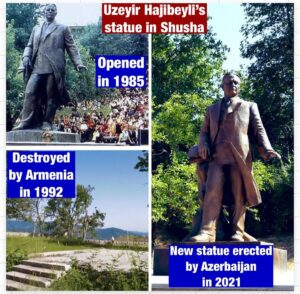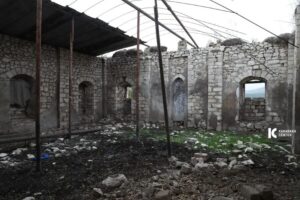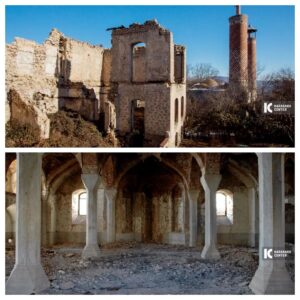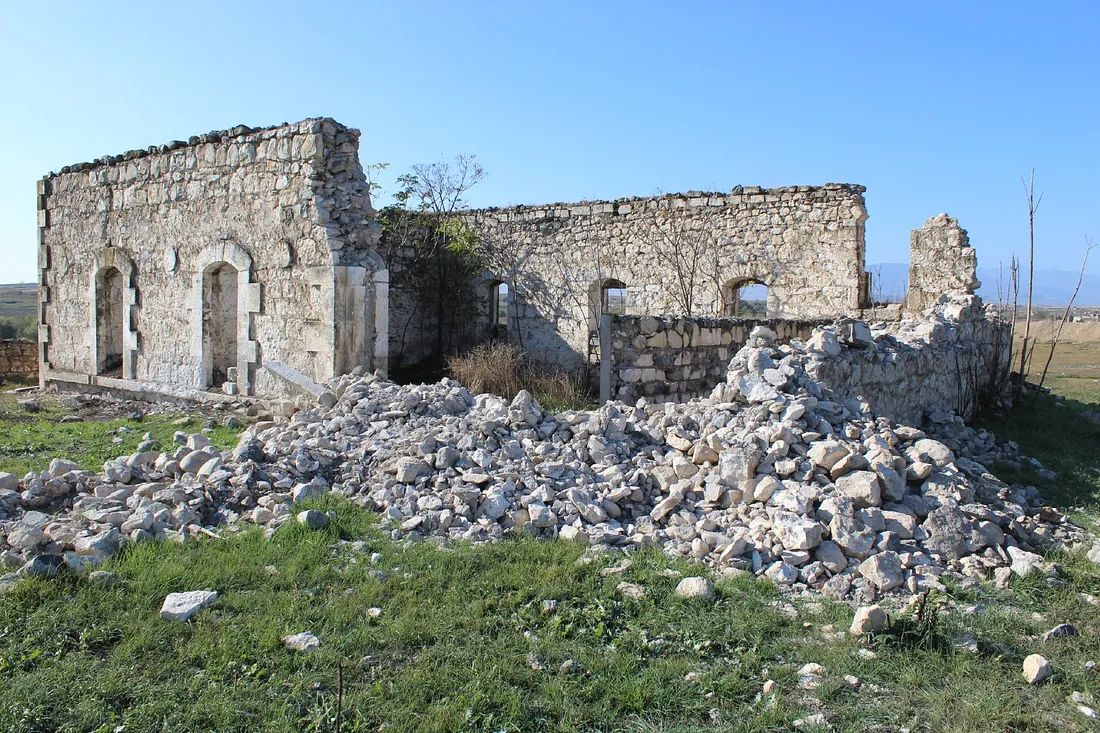BAKU( WNAM REPORT): Azerbaijan boasts a rich historical past and a diverse cultural legacy, with evidence of early human settlement found in the form of rock drawings, architectural monuments, and archaeological artifacts. This vast cultural heritage reflects the country’s significant contributions to human history and civilization.
During three decades of Armenian occupation, more than 700 historical monuments, 22 museums, including 100 000 museum exhibits, 927 libraries, 58 archeological sites, 26 fortresses and fortress wall and other objects of the cultural heritage were destroyed, plundered or misappropriated by Armenia.
A lot of reports were introduced to cover the act of vandalism committed by Armenians, but it did not receive much publicity in the world media circle.
To illustrate the point, Armenians used mosques in the occupied lands of Azerbaijan as cattle pens, stables, and horse stalls. Having no proper respect for religious monuments, mosques, as well as sacred places, vandals continued their heinous actions even after the Patriotic War.
The destruction of Azerbaijan’s material and cultural heritage by Armenians is an act of vandalism not only against Azerbaijan but also against human values. Destruction of mosques and their looting, and appropriation of material-cultural and religious monuments is part of the barbaric ideology of Armenians.
Even today, although Azerbaijan liberated its lands from occupation, it is possible to clearly see Armenian vandalism on those destroyed religious and cultural monuments.
The historical mosque in Aghdam, which originated in the 19th century, unfortunately, suffered damage and desecration and was subsequently repurposed for different uses as a pig stall.
“The destruction of religious monuments in Garabagh by Armenia is a tragedy,” said Salim bin Mohammed al-Malik, head of the Islamic World Education, Science and Culture Organization (ICESCO).
“The scene we see here (Garabagh) is a real tragedy. When we visited the liberated lands, we saw the destruction of all the villages, townships, and historical and religious monuments. Destruction of mosques and religious temples, insult and vandalism is an absolutely unacceptable action,” al-Malik said during a visit to Azerbaijan’s districts liberated from occupation.
Cultural samples and ancient manuscripts of the 13th century Khudaveng monastery in Kalbajar district, as well as valuable exhibits discovered during archaeological excavations near Shahbulag fortress in Aghdam district, were smuggled to Armenia.
Gross violation of international humanitarian law, including UNESCO normative documents, such as the 1954 Hague Convention, its two protocols, as well as the 1970 Convention.
Along with Islamic religious monuments, Christian monuments have also become victims of vandalism. The use of 2 temples in Khojavand region as battle positions by the occupying forces, the writing of various words and phrases in Cyrillic and Armenian alphabets on the walls of a number of monuments is a manifestation of the indifferent attitude towards Christian religious monuments. In addition, 1 temple was completely destroyed in the liberated territories, and 20 temples were destroyed in different volumes and scales.
At the same time, during the inventory, the fact of placing mines around and inside the cemeteries and 1 tomb was recorded.
The liberated territories of Azerbaijan have been turned into a textbook example of urbicide, culturicide and ecocide.
Since the end of 2020, thousands of foreign diplomats, journalists, NGOs and politicians, including from NAM countries, have visited the liberated territories and witnessed the barbarism committed by Armenia.
“Destruction of Azerbaijan’s Islamic historical and cultural heritage in Armenia is regrettable,” President of the Republic of Azerbaijan Ilham Aliyev said in his message to the participants of the international conference themed “Embracing Diversity: Tackling Islamophobia in 2024” held in Baku.
“Azerbaijan has raised this matter with UNESCO, calling for a technical mission to be sent to that country for assessing the conditions of our cultural and religious sites subjected to destruction in Armenia for years. Unfortunately, to this day, UNESCO is yet to respond to our request,” the head of state underlined.


